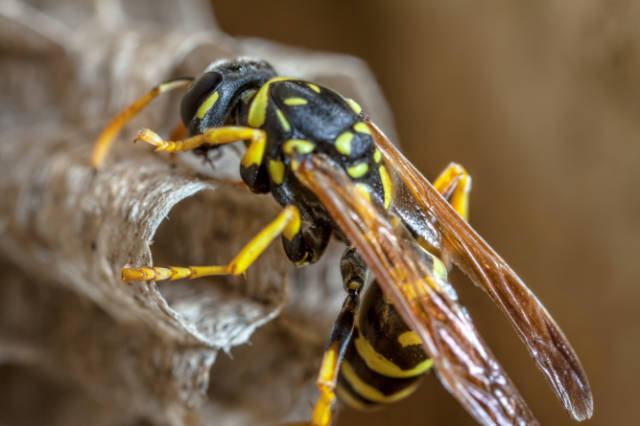When the weather gets warmer, wasps start buzzing around. Homeowners and gardeners face a familiar problem: when to get rid of wasps on their own and when to call a professional pest control service. For safe and effective wasp control, it’s important to find a balance between do-it-yourself ways and professional help. In this detailed guide, we look at the things you should think about when choosing between DIY wasp control and hiring a professional, so you can make the best choice for a wasp-free environment.
How to tell what kind of wasp it is
The first step in getting rid of wasps on your property is to figure out what kind they are. Some wasps, like paper wasps and mud daubers, are not as dangerous and may not need to be killed right away. On the other hand, yellow jackets and hornets can be more dangerous and aggressive, especially if their homes are near places where a lot of people are. Understanding the types of wasps and how they act will help you decide what to do.
Wasp Nest Size and Where It Is
It’s important to think about where a wasp nest is and how big it is. If the nest is small and far away from people, you might be able to get rid of it on your own. But big nests or ones near doors, windows, or walkways are more dangerous and should be taken care of by pros to reduce the chance of stings and aggressive behavior.
Trying to figure out how likely allergic reactions are
People who are allergic to wasp poison should put their safety first and not try to get rid of wasps on their own. Wasp bites can kill people who are allergic to them, and it can be dangerous to try to handle their nests. For people who are allergic to venom, the safest thing to do is to hire a skilled pest control service.
Availability of Gear and Equipment for Safety
When you try to get rid of wasps on your own, you must wear the right protection. To avoid getting stung, you must wear a wasp-proof suit, gloves, and a veil or hat with a screen. If you don’t have the right tools or don’t feel safe dealing with wasps, it may be best to leave the job to someone who does have the right tools and knows what to do.
Possible dangers and safety steps
Do-it-yourself wasp control can be dangerous, especially when you’re working with aggressive wasps or big nests. Accidents and injuries can happen if you climb stairs or use the wrong tools to get rid of nests. If you aren’t sure how to safely deal with a wasp nest, it’s best to call a professional to avoid any accidents.
IPM (Integrated Pest Management) Method
Using a technique called “integrated pest management” (IPM) is often the best way to get rid of wasps. This approach uses a mix of different ways to get rid of the birds, such as physically removing their nests, taking preventative measures, changing their habitat, and letting the birds take care of themselves. IPM is usually used by professionals who take care of pests. It is a complete and eco-friendly way to control wasp numbers.
When it comes to getting rid of wasps, it can make all the difference to know when to do it yourself and when to call a professional. Identifying the type of wasp, figuring out where and how big the nest is, and thinking about the risk of an allergic reaction are all important things to think about. Also, figuring out if you have the right tools, if there are any risks, and if you need an integrated pest control plan will help you make a smart choice.
DIY methods can work for small, low-risk nests that are far from people, as long as you have the right tools and feel safe doing the job. But it’s best to call a professional pest control service if the nest is big, the wasps are violent, or you know you’re allergic to their venom.
By weighing the pros and cons and putting safety first, you can easily deal with wasp infestations and get rid of them. Whether you do it yourself or hire a professional, remember that a well-executed plan is the key to living in peace with these buzzing insects.



